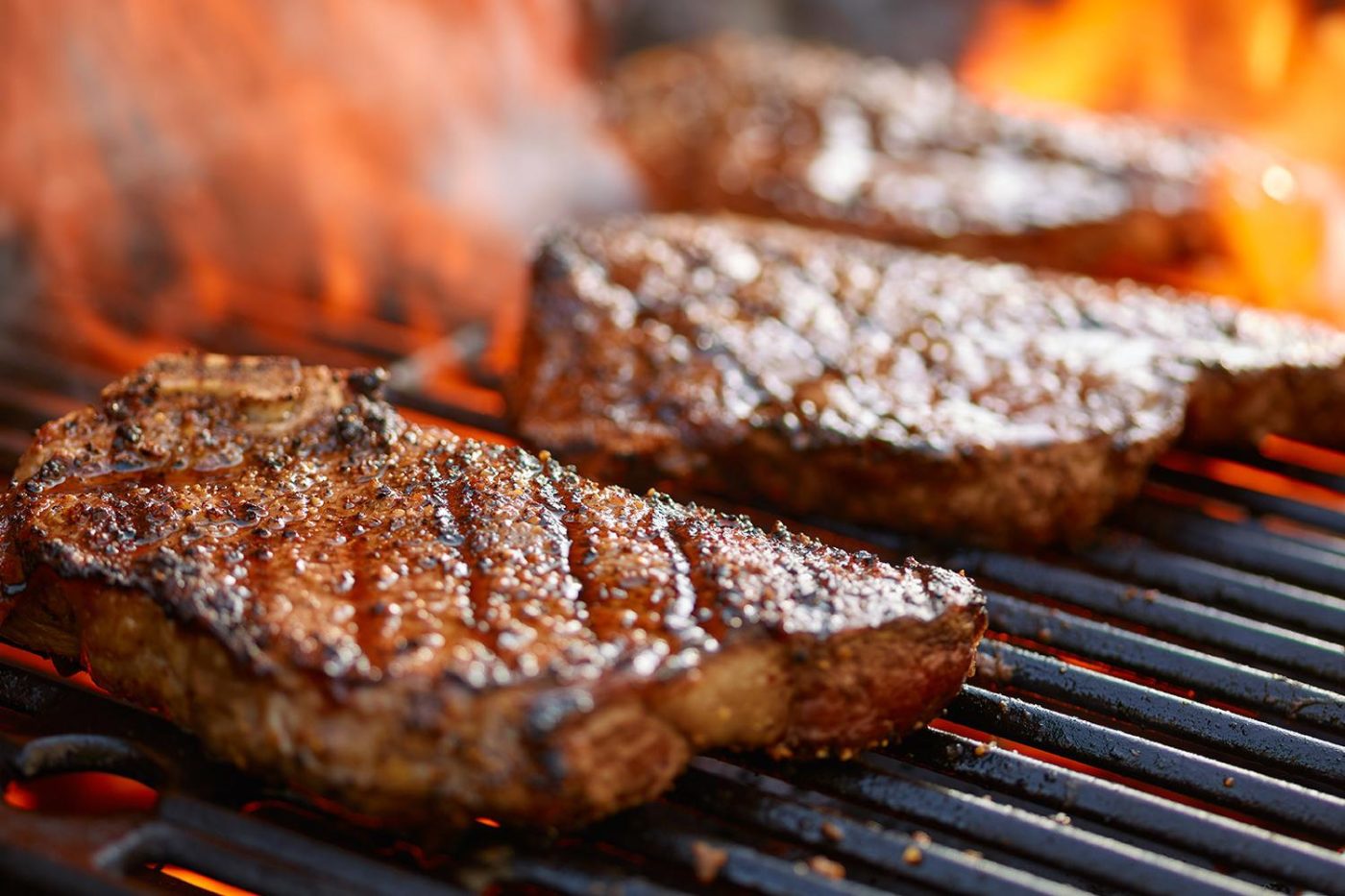No matter how reliant we are on delivery apps and soft, cuddly mattresses, deep down in every man’s heart is a burning desire to prove he could live like his ancestors if the world went to sh*t.
Enter: steak. Particularly here in Australia, our love of steak is comparative with Britons’ love of whinging about the weather. And, while current exports of Australian beef might be in a slight decline due to a rise in the Australian dollar, it just means there’s more beef kept in the country for us to enjoy.
But, to really enjoy a steak, you need to factor in two key ingredients: first, the quality of the meat you source. Sure, you can pick up a decent piece of steak from your local supermarket. But if it’s absolute perfection you’re after, you’ll want to check out your local butcher instead. Second, you need to make sure you cook it perfectly. Different cuts of beef require varying amounts of time, and some are best-had medium-rare, while others flourish when they’re just seared through to a rare level.
However, according to Australian chef Neil Perry, who currently works the grill at Margeret, a fine-dining restaurant in Sydney’s Double Bay, you should also aim to cook it over fire, if you can.
Curated news for men,
delivered to your inbox.
Join the DMARGE newsletter — Be the first to receive the latest news and exclusive stories on style, travel, luxury, cars, and watches. Straight to your inbox.
Taking to Instagram a couple of months ago, Neil took followers through how to cook ribeye, sirloin wagyu and fillet steaks (and adds you can get the very same delivered to your door if you live in Greater Sydney). But, aside from learning how to let them cook for a few minutes, and to turn them 90-degrees on a grill, Neil says his favourite way to cook steaks is over a fire.
Of course, he has access to a fancy firepit in the kitchen of his restaurant, and he understands you’re unlikely to have one of those at home yourself. So, for similar culinary benefits, Neil says we can cook our steaks on a barbeque or over some hot charcoals.
“I promise, if you light a charcoal fire or a wood fire, and you cook meat, you really won’t go back any other way,” he claims.
He adds that you can still get beautiful results from pan-searing steaks since it provides “a really nice crust,” or even from an electric, or gas barbeque, but “once you’ve [cooked over a fire] with that beautiful smokiness, you’ll never go back.”
So, cooking medium taken care of, how do you get the absolute best flavour from your slabs of meat? Neil stresses the importance of seasoning, something we should already know well enough. But, you may be surprised to learn just how much salt you should be sprinkling on your steaks. “If you think you’ve salted it enough, salt it a bit more,” says Neil. “That’s the difference between professional chefs and home cooks.”
He further adds you should apply oil to the steak itself, and not the pan or the grill you’re cooking on. “You do not oil the grill, or you do not oil the pan, you always oil the steak, and put it into a searing hot pan, or on a beautiful grill.”
Neil then reminds us that we shouldn’t “overcook dry-aged beef.” This is because dry-aged steaks, as their moniker implies, are dryer pieces of meat, so naturally, a lot of the juiciness would have gone. Overcooking a dry-aged steak will take away even more, and you’ll just end up with a chewy, horrible mess.
Take these factors into account next time you want to tuck into a steak dinner at home, and you’ll likely agree the experience is better than sex.

